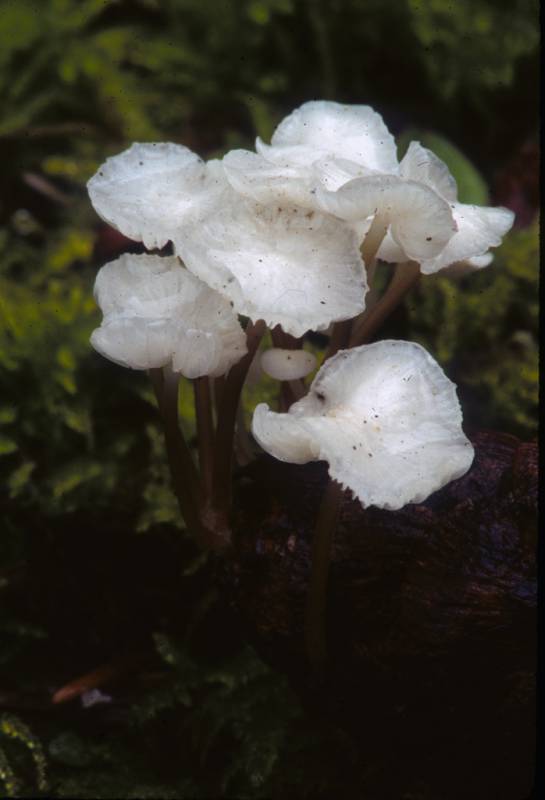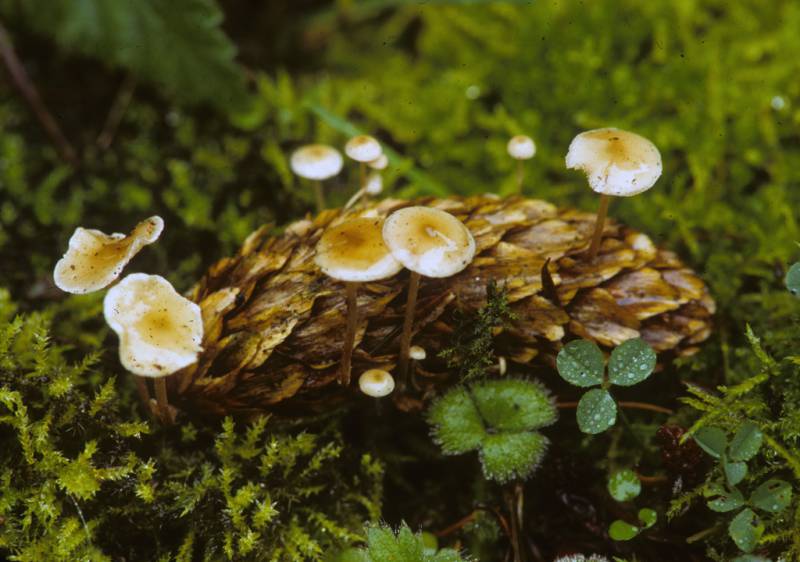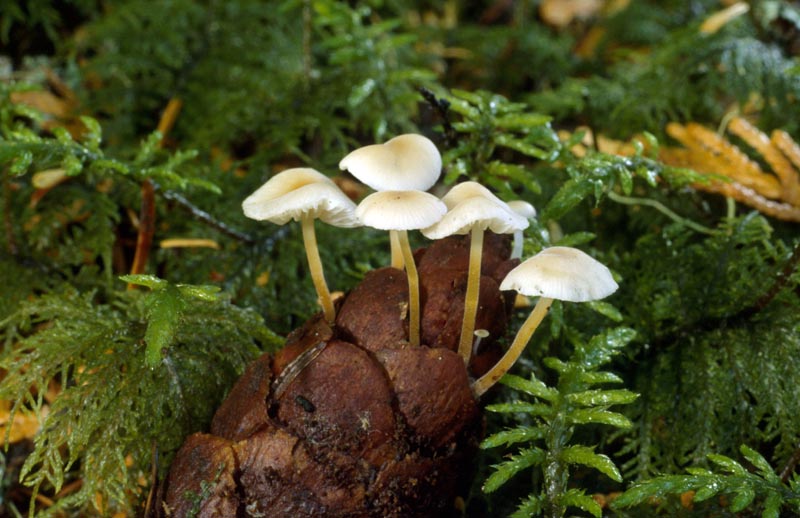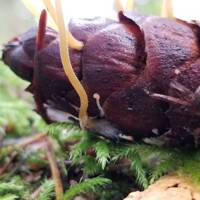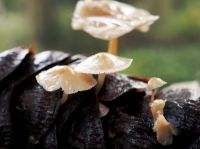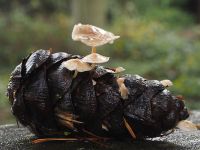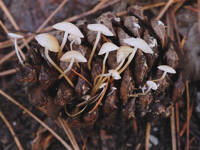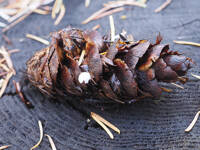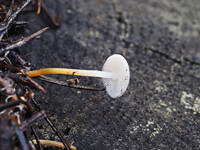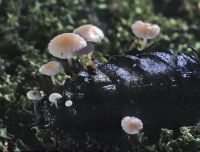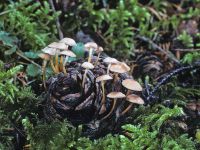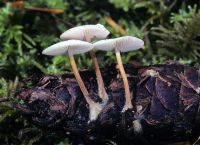Distribution: Broad
Substrate: Well rotted Douglas fir cones
Spores: small (3--6 x 1.5--3.5 µm) non-amyloid spores
Conservation Status: Not of concern
Strobilurus trullisatus is probably the most common cone-dwelling gilled fungus in the PNW, overwhelmingly favoring Douglas-fir cones that are fairly well rotted. The fruitbodies often arise from buried cones, so a little excavation may be required to make the substrate apparent. Like other members of the small genus Strobilurus, it forms small, dull-colored, fruitbodies with broadly convex to flat caps, small non-amyloid spores, cap cuticle composed of cell-like hyphae, and no clamp connections. In addition, the cap is whitish, often with pink tones, the gills are closely spaced, and the stipe is thin, grades from whitish at the apex to yellowish to brown in its lower portion, and bears yellow-brown or orangeish wooly hairs at the base. Important microscopic features include the small (3--6 x 1.5--3.5 µm) non-amyloid spores and abundant, relatively thin-walled, pleurocystidia whose tips usually bear a mass of granular material that leaves a bit of a ridge when it disappears. The less common S. occidentalis V.L. Wells & Kempton is very similar, usually differentiated by its occurrence on spruce cones, darker cap that lacks pinkish tones, and thicker-walled pleurocystidia that lack the granular material.
PNW Herbaria: Specimen records of Strobilurus trullisatus in the Consortium of Pacific Northwest Herbaria database
CalPhotos: Strobilurus trullisatus photos

